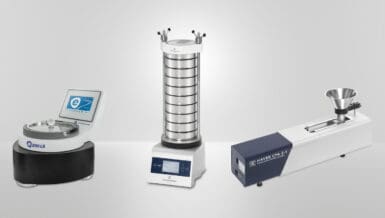Perfect metal powders need optimal classification
“Conventional sieving machines remove the coarse particles that accumulate during atomisation of the metal powder in a pre-classification step. This technology, however, soon encounters its limits when flexible separation cuts, inert gas operation or more frequent product changes are required,” explains Alexander Krauser, Operations Director Chemical Division at Hosokawa Alpine. An optimum solution is now available: air classifiers from Hosokawa Alpine. The different types of air classifiers always work in a manner precisely tailored to the task at hand: The tried-and-trusted Hosokawa Alpine Turboplex ATP or TSP ultrafine air classifiers provide flexible separation cuts for pre-classifying or limiting the top-size and for dedusting. With the Hosokawa Alpine TTSP, customers achieve an optimally steep particle size distribution via two-stage classification in just one single machine.
Ultra-fine cryogenic grinding of polymer powder
Ultra-fine grinding with exact upper particle size limitation as well as dedusting are the essential requirements for 3D printing with polymer powders. The Contraplex wide chamber mill has proven itself in practice for many years and has been adapted for the requirements of 3D printing. “The CW II is distinguished by optimised grinding tools and temperature control, which reduce liquid nitrogen and energy consumption,” says Alexander Krauser. Tumbler screening machines or air classifiers are used to achieve the required particle size distribution. The latter ensure, for example, dedusting of particles smaller than 10 – 20 μm as well as a upper particle size limitation of 70 – 100 μm.











































